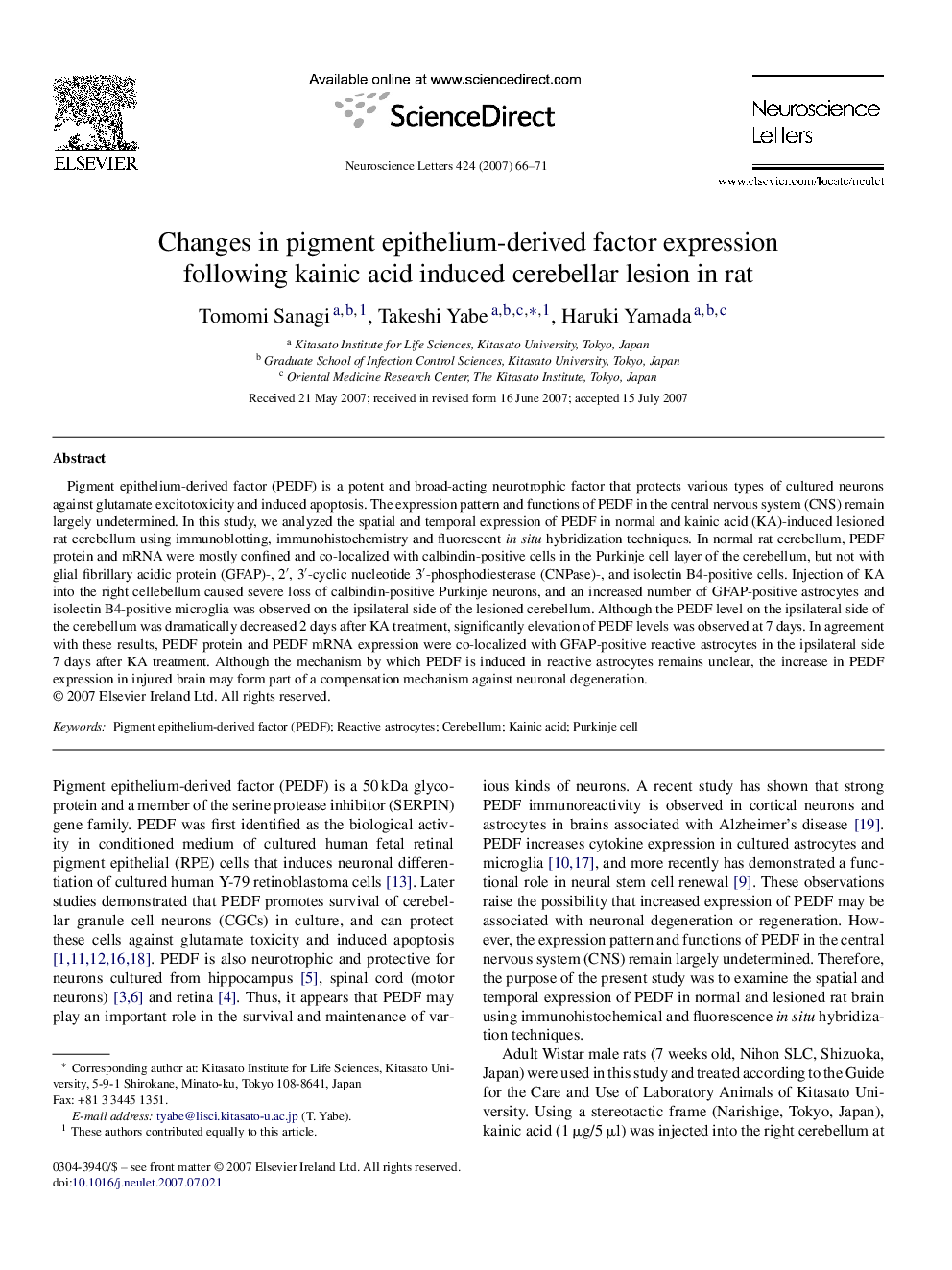| Article ID | Journal | Published Year | Pages | File Type |
|---|---|---|---|---|
| 4349279 | Neuroscience Letters | 2007 | 6 Pages |
Pigment epithelium-derived factor (PEDF) is a potent and broad-acting neurotrophic factor that protects various types of cultured neurons against glutamate excitotoxicity and induced apoptosis. The expression pattern and functions of PEDF in the central nervous system (CNS) remain largely undetermined. In this study, we analyzed the spatial and temporal expression of PEDF in normal and kainic acid (KA)-induced lesioned rat cerebellum using immunoblotting, immunohistochemistry and fluorescent in situ hybridization techniques. In normal rat cerebellum, PEDF protein and mRNA were mostly confined and co-localized with calbindin-positive cells in the Purkinje cell layer of the cerebellum, but not with glial fibrillary acidic protein (GFAP)-, 2′, 3′-cyclic nucleotide 3′-phosphodiesterase (CNPase)-, and isolectin B4-positive cells. Injection of KA into the right cellebellum caused severe loss of calbindin-positive Purkinje neurons, and an increased number of GFAP-positive astrocytes and isolectin B4-positive microglia was observed on the ipsilateral side of the lesioned cerebellum. Although the PEDF level on the ipsilateral side of the cerebellum was dramatically decreased 2 days after KA treatment, significantly elevation of PEDF levels was observed at 7 days. In agreement with these results, PEDF protein and PEDF mRNA expression were co-localized with GFAP-positive reactive astrocytes in the ipsilateral side 7 days after KA treatment. Although the mechanism by which PEDF is induced in reactive astrocytes remains unclear, the increase in PEDF expression in injured brain may form part of a compensation mechanism against neuronal degeneration.
